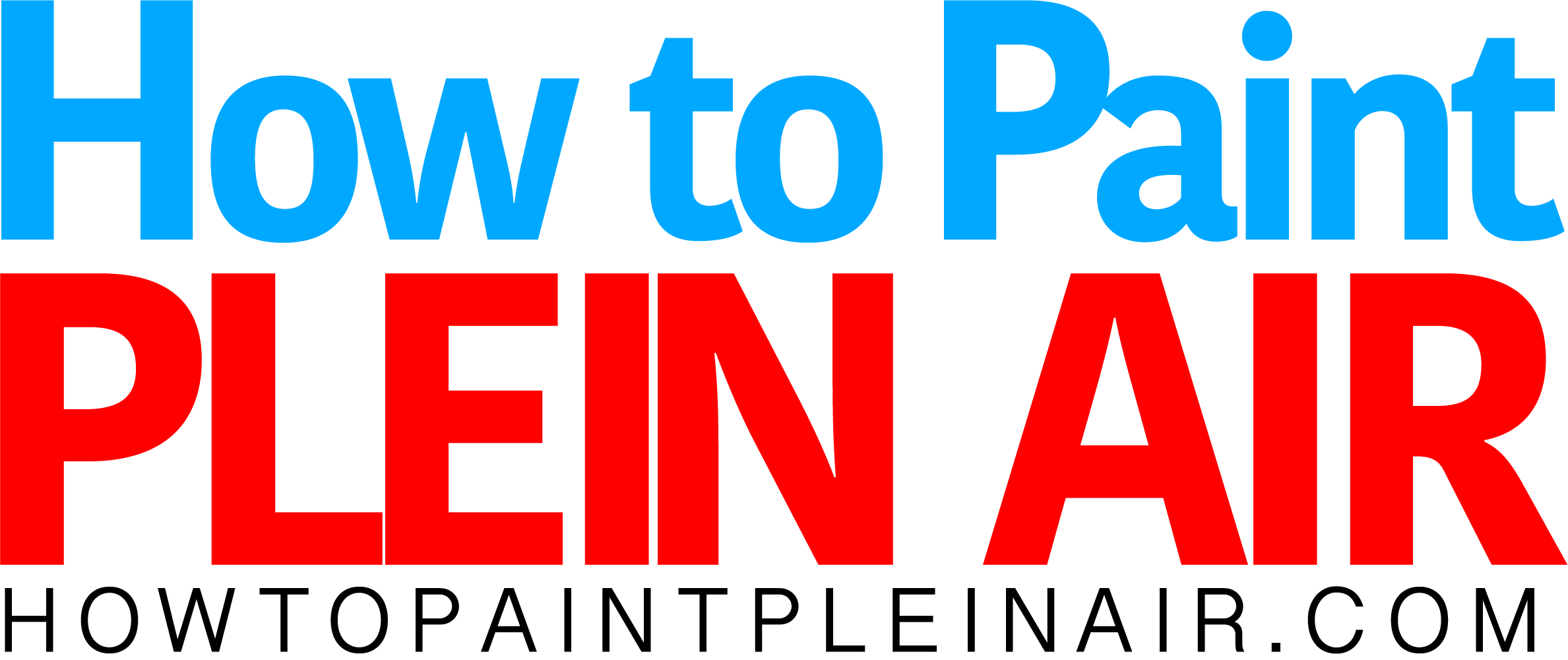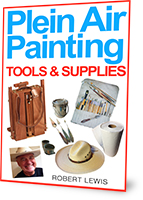Immediacy is a quality of freshness in the visual image. It tells the viewer that you have not labored, but have confidently laid down the paint with mastery. The plein air sketch in oil is a way to achieve immediacy and is meant to be finished in a short time. It is a sketch, just like your pencil sketches, but using some loose paint. Loose meaning your paint is thinned with a little more medium than you might normally use. Medium does not mean spirits such as OMS or turpentine. It means the traditional medium or some variation of that.
Building upon the quick pencil sketching practice and the color work you have done, learn to quickly block in the basic shapes of the scene and prepare to add details, working from larger to smaller brushes. Brights and flats work well in a quick sketch to create a sense of energy. This enhances the feeling of immediacy.
The quick oil sketch is usually done on small canvases up to 9”x12”. There is no rule. Any size you feel comfortable with. While the quick sketch is a great way to take color notes on a scene for use later in the studio, competitions often have a quick sketch or quick paint mini-competition where these skills really come in handy.
A small painting can have as much emotional impact as a large one, and with a lot less expense and work. Like a sparkling jewel, a small painting can dazzle the eye. Quick sketches in oil can remain standalone paintings or be used as a basis for a final piece. In fact, there is no one to tell you that quick sketches can not be what you focus on in your work, never even doing what might be considered “finished” pieces. Sounds like fun.
Try your first quick sketches in oil on 5”x7” or 6”x8” canvas panels. Mix up your colors a bit loose and don’t use a tiny brush at first. If you use a brush that is too small then you will tend to get obsessed with details. Keep it a sketch. Minimal details. Broader strokes. You want to nail down the values and the colors. Finish it up by placing a couple of details in the focal area with a small brush; but keep it abstract. Do not put eyes on the cows or individual leaves on the trees! It’s a quick sketch in oil.









